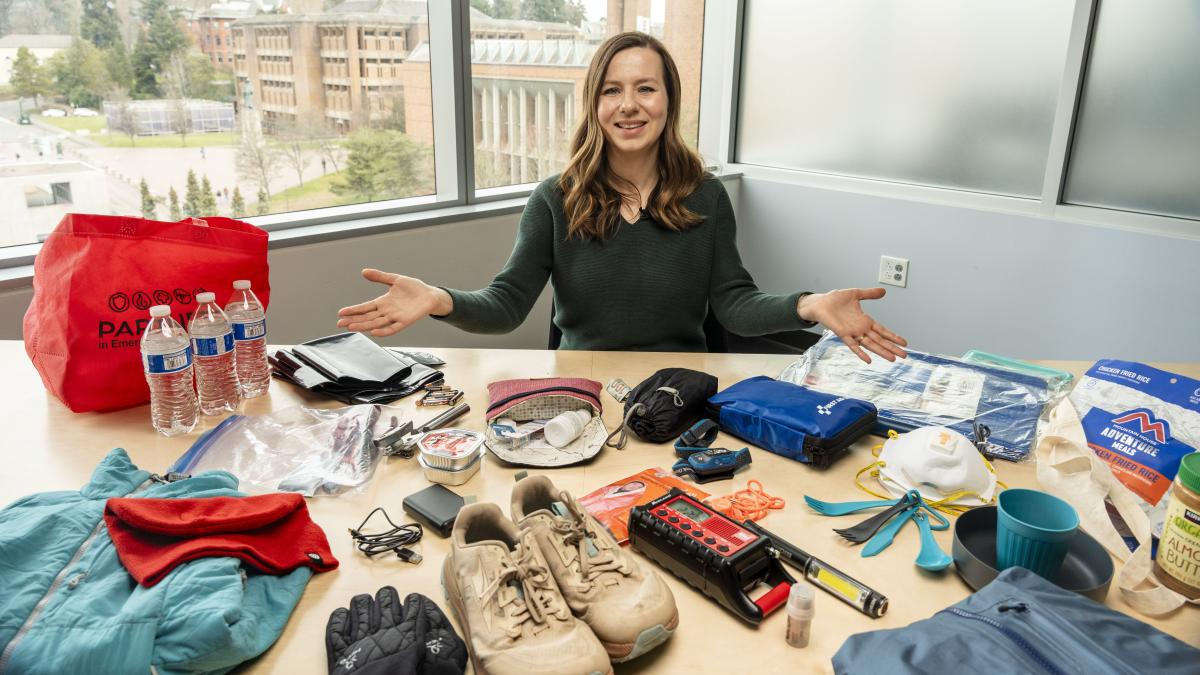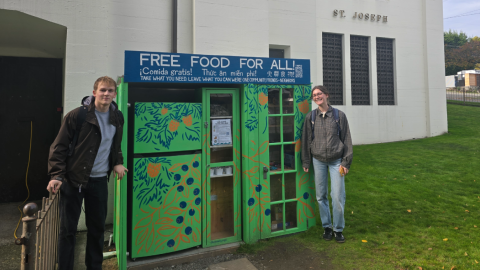If you don’t already have an emergency kit at home, you’ve likely been meaning to build one for months, if not years. Kathleen Moloney can help you check that item off your to-do list.
Moloney, a research scientist with the Center for Disaster Resilient Communities and PhD student with the UW’s Department of Environmental & Occupational Health Sciences, said it’s important to imagine what you’ll need if a disaster like a flood, fire or earthquake hits. You may be stranded without power or access to resources for several days.
First, and most importantly, is water. You’ll need 1 gallon per person per day. Have about two weeks' worth in your home and try to keep at least a three-day supply in your kit.
“I also have a Lifestraw water filter, in case my water supply runs out,” Moloney said. “This allows me to drink from sources of water that may have been contaminated.”
Pack food and medicine
Food should include non-perishable items like granola bars, beef jerky, peanut butter, dried fruits and nuts. Keep enough food for several days in your kit, and enough food for two weeks somewhere else in your home. Don’t forget food for your pets if you have pets.
Also include food-related items such as plates, utensils, cups and a can opener.
Include anything you’ll need to stay healthy, such as a seven-day supply of prescription medicines, a first-aid kit, N95 masks if air quality is bad, and over-the-counter medicines such as pain relievers, antacids and anti-diarrheal medication.
Prepare for a power outage by stocking your emergency kit with a flashlight, headlamp and extra batteries. Also include chargers for any electronic devices, like your phone, and a power bank.
Prepare to face the elements
A NOAA weather radio can help you stay informed about ongoing hazards, even when power and cell service are down. Some weather radios include additional features like the ability to send an SOS and charge your electronics. A whistle is also useful for alerting others to your location.
Be ready to make small repairs with a few simple tools, such as a pocketknife, scissors, duct tape, pliers and a wrench, which can also help you turn off utilities.
A tarp or plastic sheet protects you from rain if you have to move outside. Warm clothes, rain gear, sturdy shoes and waterproof matches can also help you face the elements. Garbage bags can also protect you and your things; pack three.
Include an emergency blanket or sleeping bag.
Documents and toiletries
Pack important documents in a waterproof bag, either the originals or a photocopy. This includes your Social Security card, passport, copy of your driver’s license or state-issued ID, proof of address, and insurance policies.
Also include $300 in cash.
Basic toiletries can include toothbrush, toothpaste, soap, contact solution and case, extra contacts, wipes and hand sanitizer.
“Your emergency preparedness kit doesn’t have to look exactly like mine,” Moloney said, “but having these essentials on-hand can help you be better prepared for any emergency situation.”
You can also consider adding extra items to your kit specific to the hazards you’re most concerned about in your local area. For example, in the Pacific Northwest, where a major earthquake is a concern, consider keeping a helmet and sturdy shoes under your bed and a fire extinguisher at home, as small fires can occur after an earthquake. You can also keep a camp stove and fuel but never use these indoors or in an enclosed space.




